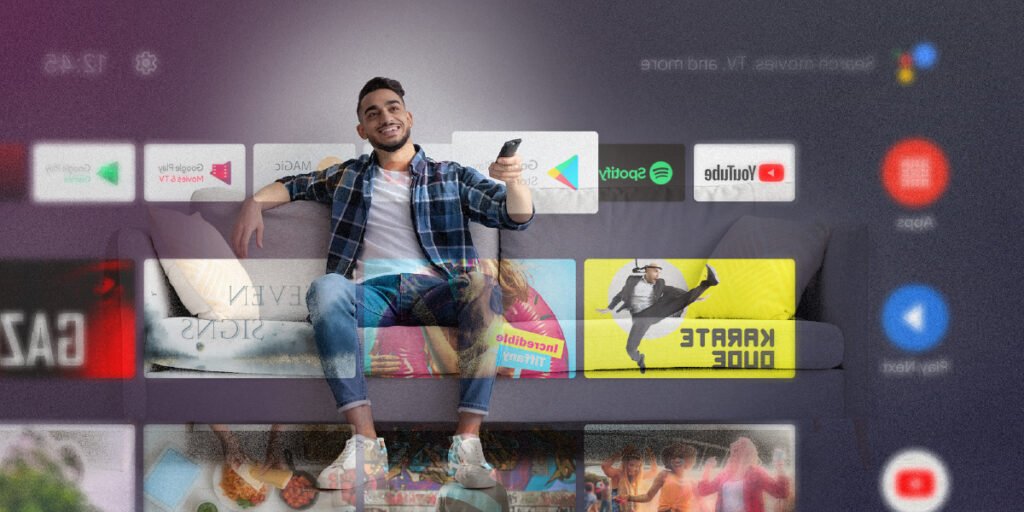IPTV (Internet Protocol Television) can be an excellent entertainment option for seniors, as it provides flexibility in terms of programming and access to content. However, for seniors, it’s crucial to ensure that the interface is easy to navigate and that the setup process is simple. Here are some tips and recommendations for making IPTV more senior-friendly:

1. Choose a Senior-Friendly IPTV Service
- Simple Interface: Look for services with a straightforward, easy-to-read interface. The guide should be clear and well-organized, with large text and simple icons.
- Pre-Set Channels: Some IPTV services offer custom preset channel lists, so seniors don’t have to spend time searching for their favorite shows.
- Voice Control: Services that offer integration with voice assistants like Amazon Alexa or Google Assistant can make it easier for seniors to find content without needing to use a remote.
2. Use a Simple Set-Top Box or App
- User-Friendly Remote: Choose a remote control that has large, easily identifiable buttons. Some remotes are designed specifically for seniors with large text and fewer buttons to avoid confusion.
- Set-Top Box: Devices like Roku, Apple TV, or Amazon Fire TV offer easy-to-use interfaces and are compatible with many IPTV services. Additionally, these devices often have preset profiles, so seniors can access their favorite content easily.
- Smartphone or Tablet App: If the senior is comfortable using a tablet or smartphone, many IPTV providers have apps with easy interfaces that work well for streaming.
3. Easy Navigation Tips
- Simple Menus: Choose services that feature minimal menus, with categories like “Live TV,” “Movies,” and “On-Demand” clearly separated.
- Favorites Lists: Many services allow users to create a favorites list or preset channel grid. This feature can be helpful for seniors who have specific shows or channels they watch regularly.
- Clear, Large Text: Ensure that the text on the screen is large and legible. Some IPTV apps allow for customization of font sizes or color contrasts, making it easier for seniors with poor vision.
4. Set Up Automatic Recommendations
- Some IPTV platforms suggest shows or movies based on past viewing. This can be helpful for seniors who might not be as tech-savvy and may enjoy having content recommended to them without the need to search.
5. Provide Clear Instructions for Setup
- Onboarding Support: Many IPTV providers offer easy-to-follow instructions for setting up their service. It’s helpful if you assist in setting it up for them initially, ensuring they have everything in place, including a strong internet connection.
- Simplify Device Settings: Disable unnecessary features or advanced settings, focusing only on the essential ones to avoid confusion.
6. Consider Specialized IPTV Services for Seniors
Some IPTV providers specialize in offering content tailored to seniors, such as classic movies, family-friendly shows, and health or educational programming.
7. Remote Control Alternatives
- If using a traditional remote is difficult, consider using a smartphone or tablet as a remote control via an app. Many IPTV services support this feature.
- Voice Control: Devices like Amazon Alexa or Google Assistant can help seniors find and watch shows without using a remote.
8. Customer Support
Choose a provider that offers good customer support with easy access. Some services have live chat, phone support, or video tutorials that are senior-friendly.
9. Safety and Security
Make sure the IPTV service is secure and that personal data is protected. Help your senior loved one set up basic security features, like strong passwords or device-specific user profiles, if necessary.
10. Adjust to Preferences
Allow seniors to personalize the interface to their liking, such as increasing contrast, choosing favorite channels, or even adjusting audio settings for better sound clarity.
By keeping these things in mind, IPTV can be a great source of entertainment and convenience for seniors, with easy access to their favorite channels, shows, and movies without the complexity of traditional TV setups.

